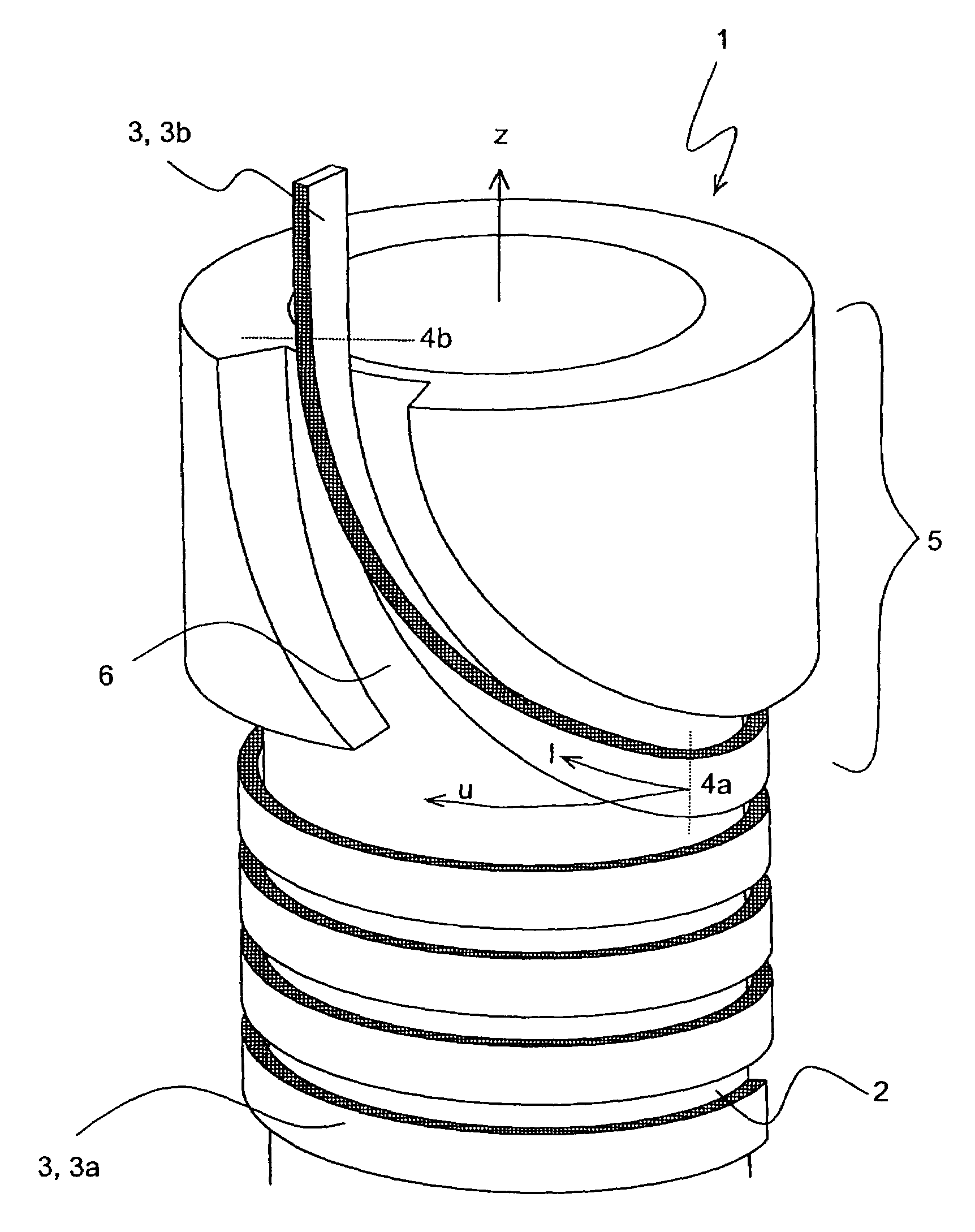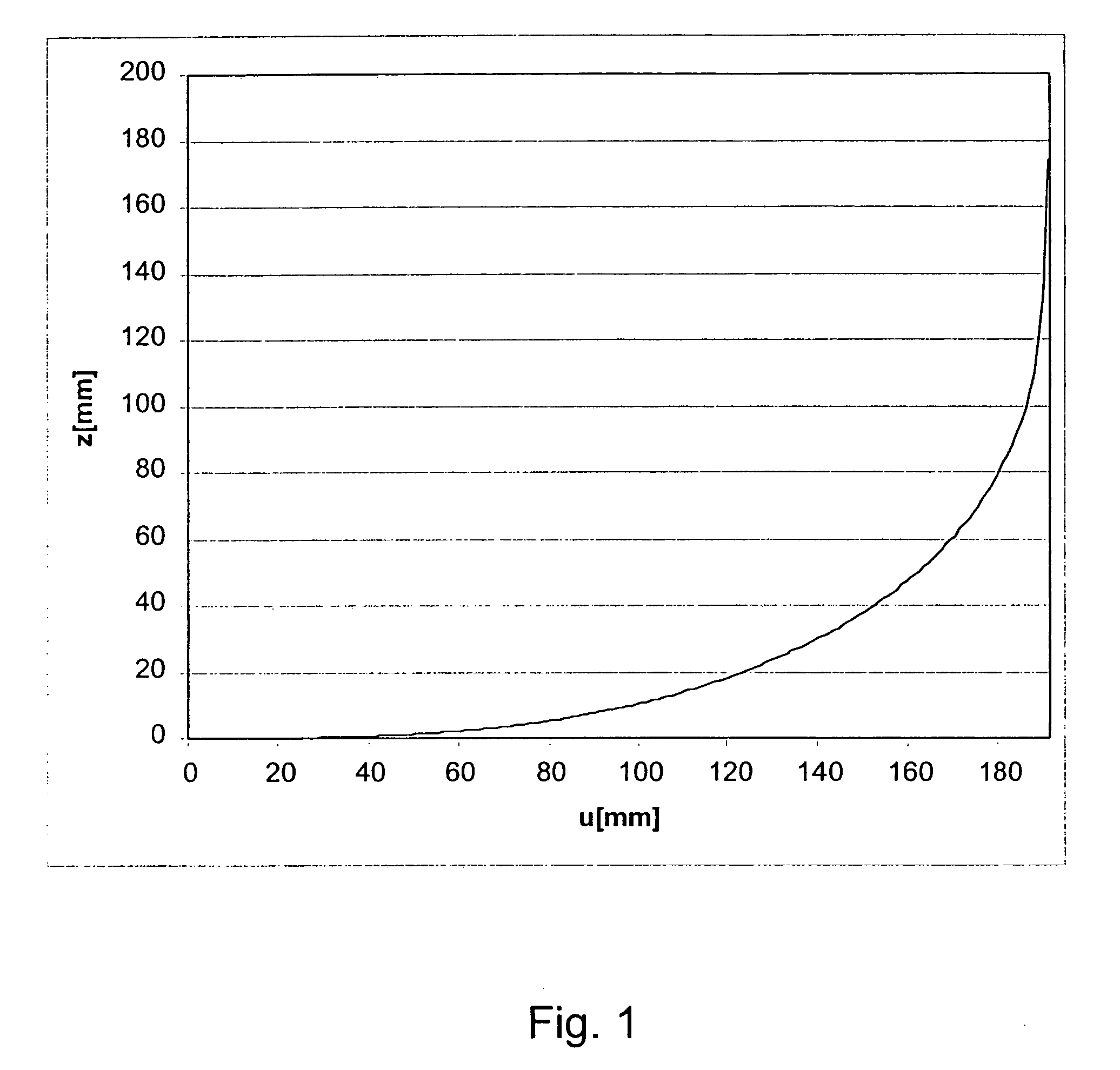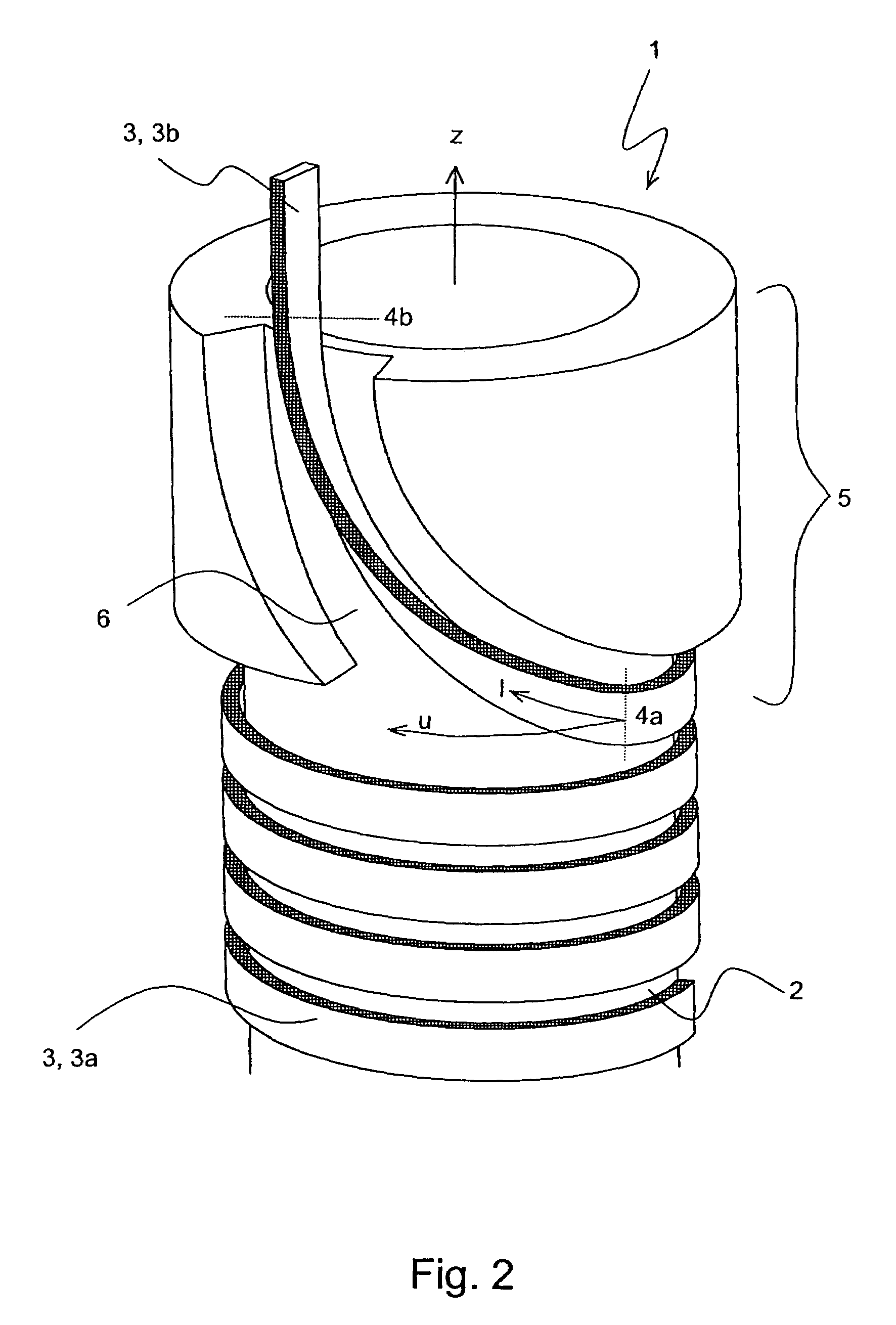Method for calculating the conductor path of a superconductor from the coil body to the joint and associated devices
a superconductor and conductor path technology, applied in the field of superconductor conductor path calculation, can solve the problems of high-temperature superconductors, difficult to realize, and not allowing such sharp bends, and achieves good temporal stability, good resolution, and maximum magnetic field strength.
- Summary
- Abstract
- Description
- Claims
- Application Information
AI Technical Summary
Benefits of technology
Problems solved by technology
Method used
Image
Examples
Embodiment Construction
[0045]The inventive method for calculating a path of a conductor guidance is illustrated with a flat high-temperature superconducting band of rectangular cross-section having the following bending parameters:[0046]Minimum bending radius about the broad side: rmin [0047]Very large (i.e. infinite) minimum bending radius across the narrow side[0048]Maximum admissible torsion: τmax
The band is wound onto a coil body to a radius r0>rmin and is to be transferred onto the cylinder envelope (radius r0) from the azimuthal to the axial direction without exceeding the bending parameters. If z is the axial coordinate and u the azimuthal coordinate, the band describes a curve z(u) on the cylinder envelope surface. To turn the band out of the azimuthal direction, it must at first be raised since bending about the narrow side is not possible or only possible to a very limited degree. The further the band is raised, the more it can be bent in the u-z plane. If it is perpendicular on the u-z plane, ...
PUM
| Property | Measurement | Unit |
|---|---|---|
| operating temperature | aaaaa | aaaaa |
| angle | aaaaa | aaaaa |
| radius r0 | aaaaa | aaaaa |
Abstract
Description
Claims
Application Information
 Login to View More
Login to View More - R&D
- Intellectual Property
- Life Sciences
- Materials
- Tech Scout
- Unparalleled Data Quality
- Higher Quality Content
- 60% Fewer Hallucinations
Browse by: Latest US Patents, China's latest patents, Technical Efficacy Thesaurus, Application Domain, Technology Topic, Popular Technical Reports.
© 2025 PatSnap. All rights reserved.Legal|Privacy policy|Modern Slavery Act Transparency Statement|Sitemap|About US| Contact US: help@patsnap.com



